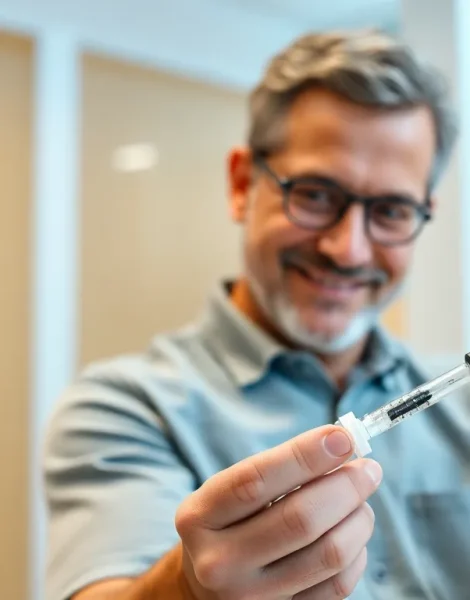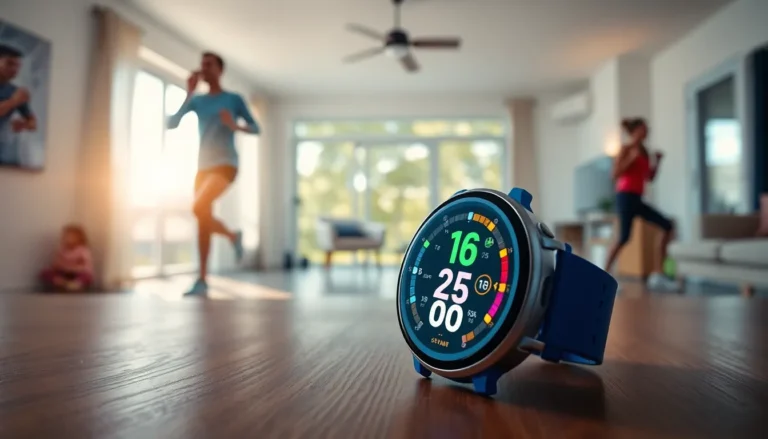Imagine a world where getting your medication feels less like a trip to the doctor’s office and more like strapping on a stylish accessory. Enter wearable injectors—these clever little devices are revolutionizing how people manage their health. Gone are the days of bulky syringes and awkward injections; now, it’s all about discreet, on-the-go convenience that fits right into your lifestyle.
With wearable injectors, patients can say goodbye to the anxiety of traditional injections. These sleek gadgets not only deliver medication with precision but also make it a lot easier to keep track of dosages. So why not embrace the future of healthcare? After all, who wouldn’t want to be the trendsetter in the world of medical technology? Get ready to dive into the fascinating realm of wearable injectors and discover how they’re changing the game for patients everywhere.
Table of Contents
ToggleOverview of Wearable Injectors
Wearable injectors represent a significant advancement in the realm of healthcare technology. These devices, designed for comfort and discretion, enable patients to administer medication without the need for traditional syringes. Stylish and compact, they fit seamlessly into daily routines.
One notable feature of these injectors is their ability to deliver medication over an extended period, thus minimizing the frequency of injections. Patients benefit from this convenience, as it allows them to maintain their therapeutic regimen with ease. Improved dosage tracking capabilities further enhance user experience by ensuring accurate medication administration.
Multiple types of wearable injectors exist in the market today. Some are designed for insulin delivery, while others cater to chronic conditions requiring consistent medication. Manufacturers emphasize user-friendly interfaces, making it easier for individuals to operate the devices with minimal training.
Clinical studies demonstrate that wearable injectors can reduce injection-related anxiety for many users. Data show that patients report higher satisfaction levels compared to traditional methods. Increased adherence to prescribed treatment regimens is another outcome associated with these innovative devices.
Healthcare providers recognize the potential of wearable injectors to improve patient outcomes. Integration into electronic health records allows for better monitoring of patient data. As the technology continues to evolve, further enhancements can be expected in functionality and user engagement.
Types of Wearable Injectors

Wearable injectors come in various forms, each designed to meet specific medical needs. Both insulin and non-insulin options enhance patient care through innovative delivery methods.
Insulin Wearable Injectors
Insulin wearable injectors deliver insulin in a controlled manner for individuals with diabetes. Devices like the Omnipod and Insulet provide customizable basal and bolus insulin delivery. These injectors allow users to manage their blood sugar levels without frequent needle pricks. Some models even feature mobile apps for real-time monitoring and dosage adjustments. Clinical data shows that insulin wearable injectors improve adherence to insulin regimens, resulting in better glycemic control. With these devices, users experience greater flexibility in their daily lives while maintaining effective diabetes management.
Non-Insulin Wearable Injectors
Non-insulin wearable injectors target a range of medical conditions, offering diverse therapeutic options. These devices administer medications for chronic illnesses such as rheumatoid arthritis or multiple sclerosis. Examples include the Teva’s generics and the Amedra’s products, which allow for controlled release over days or weeks. Patients benefit from the convenience of wearing these injectors, minimizing appointment frequency and enhancing medication adherence. Studies indicate that non-insulin injectors can significantly reduce the fear of injections while improving overall patient satisfaction. By integrating these devices into their treatment plans, patients experience a seamless approach to ongoing therapy.
Benefits of Wearable Injectors
Wearable injectors provide a range of advantages that significantly enhance patient care. Their innovative design promotes easier medication management and improves overall health outcomes.
Improved Patient Compliance
Wearable injectors facilitate better adherence to dosing schedules through continuous medication delivery. Patients experience a less cumbersome process, leading to increased routine integration. Devices like insulin injectors help individuals with diabetes maintain consistent blood sugar levels. Simplified dosing tracking features encourage users to stick to their therapeutic regimens. Studies reveal that wearable injectors result in higher compliance rates, with patients appreciating the discreet and user-friendly operation.
Reduced Injection Anxiety
Wearable injectors help alleviate the anxiety associated with traditional injections. Patients often prefer these sleek devices, finding them more comfortable and less intimidating. Instead of large syringes, users benefit from small, unobtrusive injectors that enhance their self-esteem. Clinical research shows that individuals using these innovative devices report lower stress levels during medication administration. The seamless integration of technology into healthcare diminishes the psychological burden of chronic illness management.
Challenges and Limitations
Wearable injectors face various challenges that can affect their adoption and effectiveness. Understanding these limitations is crucial for maximizing their benefits in healthcare.
Technical Limitations
Technical hurdles remain a significant concern for wearable injectors. Devices often depend on complex technology for medication delivery. Issues like device malfunctions can lead to improper dosages, impacting patient safety. Limited battery life poses another challenge, as extended use can result in the need for frequent recharging. Additionally, compatibility with different medications can restrict the types of treatments available. Such limitations hinder the usability of these devices in diverse medical scenarios.
Cost and Accessibility
Cost factors play a major role in the accessibility of wearable injectors. High production costs can lead to expensive devices, making them less affordable for many patients. Insurance coverage varies significantly, often limiting the financial assistance available for these innovations. Consequently, patients with limited resources may struggle to acquire the devices. Geographic disparities in healthcare can also affect availability, particularly in rural areas where specialized care is less accessible. Addressing these economic barriers is essential for improving the reach of wearable injectors in patient care.
Future Trends in Wearable Injectors
Emerging advancements in wearable injector technology promise to further enhance patient experiences. Integration with smart technologies will likely become a norm, providing features such as data analytics and remote monitoring capabilities. Patients may benefit from real-time feedback about their medication levels, helping them manage dosages more effectively.
Increased connectivity through mobile applications will support better tracking of medication schedules for patients. These applications can also facilitate communication between patients and healthcare providers, improving overall health management. Equipped with AI, wearable injectors might offer personalized therapy adjustments based on patient responses.
Expectations for wider adoption of these devices will rise, especially as their design continues to evolve toward increased comfort and usability. Regulatory approval processes may expedite in order to keep pace with innovations, ensuring that patients gain timely access to new technologies. Manufacturers are likely to focus on increasing the battery life of wearable injectors, addressing one of the primary concerns about usability.
Emerging materials may provide enhanced biocompatibility for these injectors, reducing the risk of allergic reactions and improving safety profiles. Research into miniaturization will also play a significant role in making these devices less intrusive, paving the way for more discreet medication delivery options.
As the healthcare landscape continues to shift, partnerships between tech companies and healthcare organizations are expected to flourish. These collaborations could lead to innovative solutions that further integrate wearable injectors into patient care protocols. This convergence of technology and healthcare indicates a promising future for wearable injectors in improving patient adherence and outcomes.
Wearable injectors are revolutionizing medication delivery by offering a modern solution that enhances patient comfort and compliance. Their sleek design and user-friendly features make managing health conditions more manageable and less intimidating. As technology continues to evolve so will the capabilities of these devices, leading to better patient outcomes and experiences.
Addressing the challenges associated with wearable injectors will be crucial for widespread adoption. By focusing on improving device reliability and accessibility, the healthcare industry can ensure that more patients benefit from this innovative approach. The future of wearable injectors looks bright with the potential for integration with smart technologies and enhanced connectivity, promising a new era in patient care.









